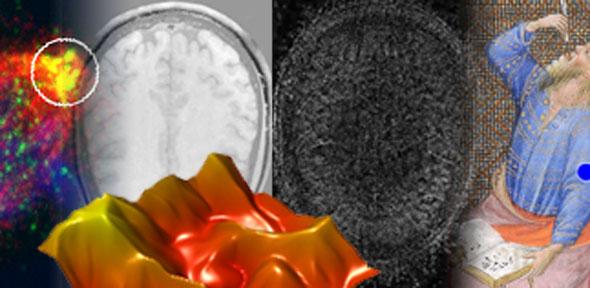
We humans are visual creatures. An image aims to depict reality to us, but also invokes our imagination. It speaks more than a thousand words. We live in a world saturated with images and images allow us to see this world – from brain cells to distant galaxies – as never before. Advanced imaging techniques enable us to ask new research questions, break down disciplinary boundaries and extend our knowledge across an immense variety of fields.
Scientists have always used images of various kinds – drawings, pictures, photographs and videos, to name a few – to make discoveries, describe processes in nature, catalogue and achieve specimens, and illustrate observations and ideas. In scientific discoveries, images are often the scientific finding itself.
A work of art, an image in itself, can be analysed and its making can be understood with the help of advanced scientific imaging techniques. New images are created by this analysis, and the worlds of arts and science are becoming increasingly overlapping.
Scientific imaging has never been as exciting as it is now, with new technologies emerging all the time. The resolution limit in light microscopy, which had seemed unbreakable, is now less than 100 nanometres. These advances in super-resolved fluorescence microscopy were recognised in 2014 by the awarding of the Nobel Prize in Chemistry to Eric Betzig and W. E. Moerner in the USA and Stefan Hell in Germany.
Cambridge is home to a wealth of research which includes developing tools for acquisition, visualisation, automated processing and analysis of images. In January 2014, a group was formed to connect, present, discuss and advance research on or with images. IMAGES brings together leading academics from across the disciplines, as well as international experts and research-led industries that work on pioneering imaging technologies and analytical algorithms.
The complex process, from acquiring images, to their interpretation and problem-solving applications, requires multi-expertise partnerships. Different problems and image applications inform similar methodologies and interpretative strategies. Cross-disciplinary collaboration is needed to analyse the image information not explicit in machine-generated data.
Mathematicians, physicists, chemists and biologists work together to develop new instruments, chemical dyes and model systems to interrogate biological questions with more precision and at greater resolution.
At CRUK Cambridge Institute and the Department of Applied Mathematics and Theoretical Physics, microscopists and mathematicians are developing new ways of tracking cells and analysing the effect of cancer drugs in tissues and whole organisms.
At the Cambridge Biomedical Campus, clinicians use magnetic resonance, positron emission tomography, and acoustic imaging as tools for looking into our internal organs. The challenge here is to produce a high quality description of patients and their ailments from data that is necessarily limited by the capability of scanners and the need to minimise exposure to harmful radiation.
Mathematicians and engineers create automated image-processing and analysis algorithms that extract meaningful, essential information from often large-scale, high-dimensional and imperfect image data.
The importance of reliable image analysis extends to astronomy, the arts, seismology, surveillance and security. Image de-noising and image restoration algorithms are also essential pieces of any further image analysis pipeline such as object segmentation and tracking, pattern recognition, in fact any quantitative and qualitative analysis of image content.
At the Fitzwilliam Museum and the Hamilton Kerr Institute, spectroscopy methods underpin the non-invasive analyses of artists’ materials and techniques, informing the conservation and cross-disciplinary interpretation of paintings, illuminated manuscripts and Egyptian papyri. The research unites imaging scientists, chemists, physicists, mathematicians, biologists, conservators, artists and historians. Thanks to cutting-edge imaging techniques, we can now see art works as never before, uncovering centuries-long secrets of their production and ensuring their preservation into the future.
The IMAGES group aims to stimulate new inquiries and focused dialogues between these many disciplines across the sciences, arts and humanities by providing them with a platform for communication. As collaborations across the University show, art and science are not disparate, but complementary ways of seeing the world. Both depend on the subtle observations of life and attempt to interpret the seen and discover the unseen.
Dr Stella Panayotova (Fitzwilliam Museum Cambridge), Dr Stefanie Reichelt (Cancer Research UK Cambridge Institute) and Dr Carola-Bibiane Schönlieb (Department of Applied Mathematics and Theoretical Physics) lead IMAGES
From visualising microscopic cells to massive galaxies, imaging is a core tool for many disciplines, and it’s also the basis of a surge in recent technical developments – some of which are being pioneered in Cambridge. Today, we begin a month-long focus on research that is exploring far beyond what the eye can see, introduced here by Stella Panayotova, Stefanie Reichelt and Carola-Bibiane Schönlieb.
The text in this work is licensed under a Creative Commons Licence. If you use this content on your site please link back to this page. For image rights, please see the credits associated with each individual image.
